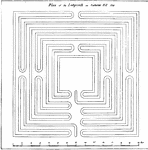Clipart tagged: ‘winchester’

Winchester Bushel
An illustration of a Winchester bushel measuring container. A bushel is a unit of dry volume, usually…

Maze
Illustrated is the maze on St. Catherine's Hill in Winchester, England. The plant was made in 1710.

Monroe, Michigan
During the War of 1812, there was a Massacre at Frenchtown. Winchester sent troops to Monroe to protect…

Army of the Potomac
"Advance of the Army of the Potomac. Occupation of Winchester, VA., and the abandoned Confederate Fortifications,…

Battle of Winchester
"Battle of Winchester, VA., March 23rd, 1862- decisive bayonet charge of the Federal troops, led by…